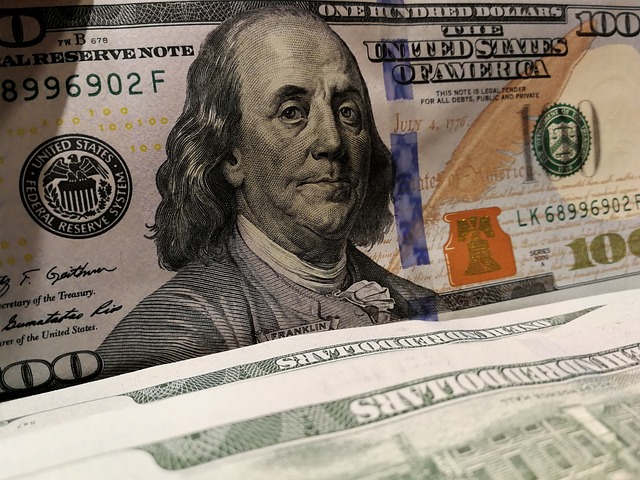Inflation is a term that you’ve likely heard frequently in the news or in conversations about the economy. But what exactly is inflation, and why does it matter? In this comprehensive guide, we’ll break down the fundamentals of inflation, explore its causes, and discuss its implications for individuals, businesses, and the overall economy.
What is Inflation?
Inflation is the rate at which the general level of prices for goods and services rises, leading to a decrease in the purchasing power of a currency. In simpler terms, it means that over time, your money can buy less than it used to. Inflation is typically expressed as an annual percentage, and it affects every aspect of the economy.
Causes of Inflation
Understanding the causes of inflation is essential to grasp its dynamics fully. Inflation can be triggered by various factors, including:

Demand-Pull Inflation
This type of inflation occurs when demand for goods and services outpaces their supply. When consumers and businesses are willing to spend more money, and there aren’t enough goods and services to meet that demand, prices tend to rise.
Cost-Push Inflation
Cost-push inflation arises when the costs of production increase, forcing businesses to pass those higher costs onto consumers in the form of higher prices. This can be caused by factors such as rising wages, increased energy costs, or supply chain disruptions.
Built-In Inflation
Built-in inflation, also known as wage-price inflation, is a self-perpetuating cycle. It occurs when workers demand higher wages to keep up with rising prices, and businesses, in turn, raise prices to cover the increased labor costs. This cycle can lead to persistent inflation.
Monetary Policy
Central banks play a crucial role in controlling inflation through monetary policy. When central banks increase the money supply by lowering interest rates or engaging in quantitative easing, it can stimulate economic activity but may also lead to inflation if not managed carefully.
Types of Inflation
Inflation can take on various forms, depending on its severity and duration:

Mild Inflation
Mild inflation, often referred to as creeping inflation, is when prices rise gradually at a relatively low annual rate, typically below 3-4%. This level of inflation is generally considered healthy for an economy as it encourages spending and investment.
Moderate Inflation
Moderate inflation falls within the range of 4-10% per year. While it may still be manageable, it can erode purchasing power more quickly than mild inflation, and central banks often aim to keep inflation within this range.
Hyperinflation
Hyperinflation is the most extreme form of inflation, with prices rising at an astronomical rate, often exceeding 50% per month. It can lead to economic instability, loss of savings, and even the breakdown of a country’s currency system.
Measuring Inflation
To monitor inflation, economists and policymakers use various indicators, with the Consumer Price Index (CPI) being one of the most widely used. The CPI measures the average change over time in the prices paid by urban consumers for a basket of goods and services, including housing, food, clothing, and transportation. Other inflation measures include the Producer Price Index (PPI) and the Personal Consumption Expenditures (PCE) price index.
The Effects of Inflation
Inflation can have both positive and negative effects on individuals, businesses, and the economy as a whole:
Positive Effects
- Encourages spending: Mild inflation can motivate consumers to spend rather than hoard money, stimulating economic growth.
- Reduces the real burden of debt: As the value of money decreases, borrowers find it easier to repay their loans with money that has less purchasing power.

Negative Effects
- Erodes purchasing power: Inflation reduces the real value of money, leading to a decline in the standard of living for those on fixed incomes.
- Uncertainty: High or unpredictable inflation can create economic uncertainty, making it challenging for businesses to plan and invest.
- Distorts price signals: Inflation can blur price signals, making it harder for consumers and businesses to make informed decisions.
Managing Inflation
Central banks play a crucial role in managing inflation through monetary policy tools like interest rates and open market operations. The goal is often to maintain price stability, aiming for a target inflation rate within a specific range. When inflation is too high, central banks may raise interest rates to reduce spending and cool down the economy. Conversely, when inflation is too low or the economy needs a boost, interest rates may be lowered.
Inflation is a complex economic concept that can have a profound impact on individuals, businesses, and the overall economy. Understanding its causes, types, measurement methods, and effects is crucial for making informed financial decisions and for policymakers to maintain economic stability.
Inflation is a natural part of any economy, and its effects can be both positive and negative. It is the role of central banks and policymakers to strike a balance and ensure that inflation remains at a level that fosters economic growth without eroding the purchasing power of the currency.
In conclusion, inflation is a topic that affects us all, whether we’re consumers, business owners, or policymakers. By staying informed about inflation and its dynamics, we can better navigate the ever-changing economic landscape and make sound financial choices.








